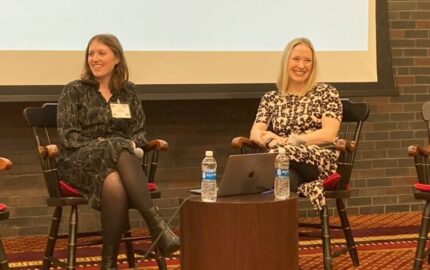 Below are excerpts from a September 2009 interview with photographer Mitch Epstein on his recent series “American Power,” which had a multi-image spread in the summer issue of Granta. In addition to decades as as a fine art photographer and occasional photojournalist, Epstein has also worked as a director, cinematographer, and production designer on several films, including Dad, Salaam Bombay!, and Mississippi Masala.
Below are excerpts from a September 2009 interview with photographer Mitch Epstein on his recent series “American Power,” which had a multi-image spread in the summer issue of Granta. In addition to decades as as a fine art photographer and occasional photojournalist, Epstein has also worked as a director, cinematographer, and production designer on several films, including Dad, Salaam Bombay!, and Mississippi Masala.Can you give me a little background on each part of your American trilogy?
I’ve been a photographer for almost 35 years. My background in photography is as an artist, not a photojournalist. The trilogy began with a series of projects starting in the mid ’90s. I had spent a decade or more working abroad photographing in India and Vietnam and doing projects there that ultimately became books. That time that I spent outside of the states changed in some way my perspective toward my home city and the country and where I grew up.
I did a piece of work in the ’90s that was about New York. And then between 2000 and 2003, I did a piece of work about my father and hometown of Holyoke, Mass. And then there’s “American Power,” which is really about my country.
What are you hoping to do with the “American Power” series?
I’m always hoping to grow as an artist. And to take something from the experience that I’ve developed over this long working career. With “American Power,” the experience was intense in so many ways—working as a photographer in the American landscape in this post-9-11 period. People were very sensitive to photography. I became very, at times angry, but also very frustrated that a lot of what I had taken for granted as a photographer—that I could go out and travel through the U.S. and do so respectfully and have the ability to take pictures without being told that I couldn’t—was no longer true.
As I looked carefully at the landscape and saw how the landscape was a reflection of the choices we had made as a society in my generation and past ones, ultimately, what I felt with this work, more than with my other work , was the importance of finding a way to communicate, to engage in a larger public conversation. So the work would very pointedly ask questions regarding the issues and themes that are embedded in this.
“American Power”—you take that on as a title, and you take on a lot. It started with the notion of energy, but also became the idea of power as it is playing out in our society.
Your images seem to follow a conceptual vision but also to double as journalism. How do you think about your work?
This work was not made with photojounalistic intentions. It was self-funded. I have had experience over my long career doing commissioned work for a number of magazines. And I have enjoyed that work. But what I’ve come to understand clearly is that I can do my work better as an artist when I’m not obligated to somebody else who has hired me to make pictures with a set of expectations.
Often I set out to do one thing and come back having done another. That’s what is central to the risk that is at the core of being an artist. So with this project I had very clear intentions and a very wide boundary. The pictures all had to relate back to the subject of energy.
So if I went to Las Vegas, it was meaningful to go to the Hoover Dam and at the same time to look at the new solar installation—one of the more cutting-edge ones, and then to go 100 miles north and to Yucca Mountain, where we’ve spent a tremendous amount of money potentially to store nuclear waste in an underground facility.
Going to these sites, oftentimes I would end up encountering things in the landscape. And going to the sites, I didn’t have an idea what the pictures would be beforehand. There’s something central about working as an artist, where I’m relinquishing my preconceptions but not following a script.
Also I’m using an 8- by 10-inch format camera. It’s easy to fall prey to formality. I’ve always carried with me as part of my practice the importance of being spontaneous and flexible, being open to serendipity. So I’ve tried to work that same way with the 8-by-10. So what that meant often was that I’d go visit one of these sites and really just study that place and look at it for all of those multiple meanings and find a way to photograph it that will speak to the immediate experience I’m having of it but also to its history. That the Hoover Dam, for instance, was an astounding accomplishment. But now it’s not working at capacity, because the water is now more valuable than the electricity the dam produces.
There is a surreal aspect to the photographs—I’m thinking particularly of the football team in the unnumbered jerseys practicing, with the plant in the background. Do you manipulate or alter your images at all to achieve that effect?
To me what matters most as I approach my work is a kind of honesty and authenticity. I shoot film. I’m not shooting digital. So I start with something that is utterly unadulterated. The vast majority are just a straight interpretation. I scan my negatives and then work in Photoshop to finish them. If I do manipulation, it’s very minor. I’m not compositing pics in the way that Jeff Wall or Andreas Gursky have. To say that I’ve never removed a figure would be untruthful, but I deliberately leave a lot of visual debris in my pictures.
If I felt like I could make the pictures more effective or better or more moving by altering them, I would, I think it’s fair game. But I myself am more challenged to do that in the actual picture-making in the moment. Sometimes I’m amazed what’s possible with a camera.
I’m up on top of a grain elevator in Iowa, where soy and grain are being grown for ethanol. Within those fields are these windmills. I take my time, and I’m graced by my being there at three o’clock and a school bus coming when there are two boys on bicycles. These are all details that are humanizing and punctuating the picture. I don’t know that I could have imagined it as poignantly. I try to be receptive to what is continually just unfolding in front of me.
Do you see what you do as narrative?
With photography, I think one can suggest narrative. But it is not the same as literary storytelling. I think that I do maybe more storytelling and develop a kind of more definitive narrative with the way in which I put my pictures together as exhibitions and books. That’s part of what excites me about books. They have a beginning, a middle, and an end. The way in which the pictures get strong in their sequence does indeed lead you through an experience. And you have to arrive at a final point. So yes in those ways, it can be narrative.
What I’m interested in doing is seeing how complex I can make the pictures without them falling prey to a kind of chaos. How layered can they be? And to find ways to invest the pictures with enough layers so that the viewer will go back and look again, and consider the experience in a new way. Photography is so familiar that we tend to take a lot of our ways of looking at photographs very much for granted. I think that great pictures invite a kind of contemplation, a kind of reading.
Can an individual picture be narrative?
An individual photo can suggest a narrative. It can imply a narrative. They’re better in a way at articulating questions than they are at delivering answers. With those football players, why don’t they have numbers? There’s not going to be an answer unless you research it. In some ways, not knowing brings you closer to the experience of the mystery of the thing. In a way, there is a kind of suggested narrative here with this picture of the football players, but you build it yourself according to how much you want to invest in an engagement of the picture. You’re noticing the detail of no numbers, but you look more closely, and you see on the small sign “Poca,” which references the town that the picture is made in. And then “Dots.” That gives you through language—it tells you about what this place is that they would call themselves the Poca Dots. It’s its own kind of American vernacular.
But it’s not that I bring, in a very precise pointed way, one narrative intention to the picture-making that I want the viewer to come away with. I want to achieve a kind of clarity in a formal and conceptual way in all these elements as I bring them together within the confines of the picture.
I’ve heard you’re mounting an end run around the news media and are taking these images straight to the public. Can you talk about how you’ll do that?
I’ve designed this project with my wife, Susan Bell, who also collaborated with me as an editor on the project. We have made a series of billboard and public transportation posters using these pictures and marrying them with short pithy texts by eminent American voices as a way to speak to some of the environmental issues that the pictures raise.
And that also would lead to a Web site that will make this project and its content more available to a larger public in a kind of pointed conversational way. The single most important thing that I came away with after having traveled to 25 states and looking at this in a very intense way is that we take far too much for granted as Americans. Our sense of entitlement needs to be called into question. We could be a more conservation-minded society, thinking not just about ourselves but about others—our children, their children, and those that have much less on a global scale.
It’s an exciting time. And I’m excited as well to think communicatively as an artist and outside the white box of museum institutions to effectively use work like mine that can—in a way that is direct, poetic, and philosophical and not just of the straightforward, hit-you-over-your-head language that we are bombarded with—that we can move people in a visceral way.
Development on this has come from our own money, but to realize it forcefully, we need funding. So we have approached foundations, and we are waiting to get a response from some funders right now. But we are also considering corporate or government sponsorship because in the end, it’s about thinking about how to realize a thing to its full potential.
[For more on Epstein's work, read Storyboard contributing editor Stephanie Mitchell's essay on "American Power."]
 In September, photographer Mitch Epstein spoke by phone with us about his project “
In September, photographer Mitch Epstein spoke by phone with us about his project “

